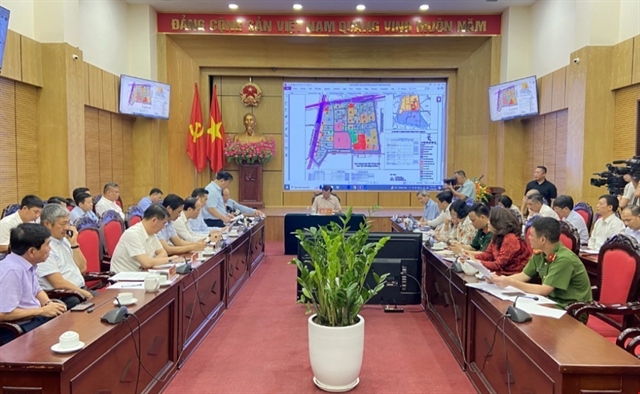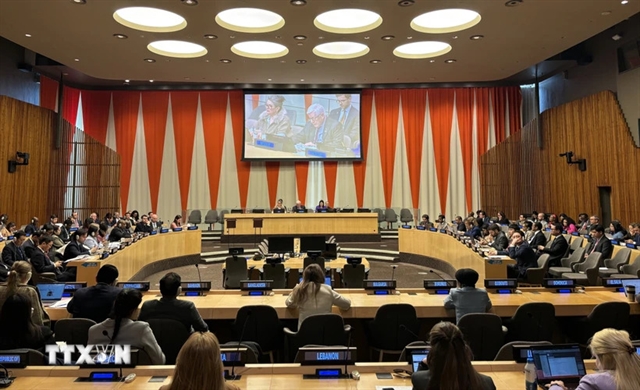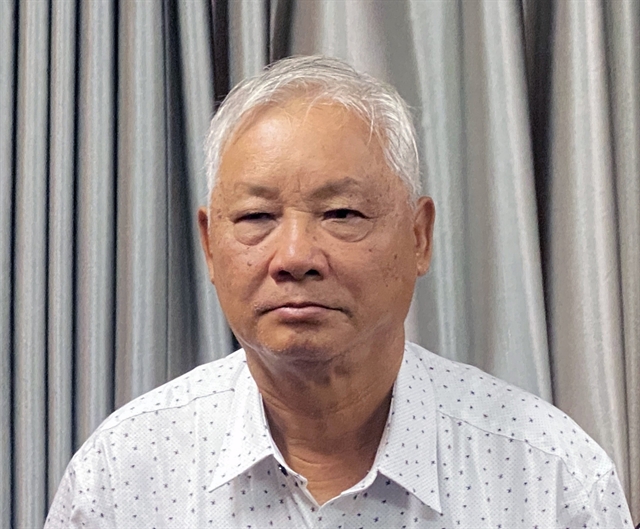 Society
Society

Differences in statistics released by various agencies have hindered road safety efforts, reported online traffic safety newspaper atgt.vn.
 |
| HCM City Traffic Police presented the city’s children with 1,000 helmets. The helmet regulation has helped to reduce traffic accident-related death since 2007. - VNA/VNS Photo Hoàng Hải |
HÀ NỘI – Differences in statistics released by various agencies have hindered road safety efforts, reported online traffic safety newspaper atgt.vn.
The Law on Statistics puts the Ministry of Public Security in charge of recording figures on traffic accidents across the country. For years, this has been handled by the ministry’s police department.
The National Committee for Traffic Safety and other relevant offices used the figures to propose traffic safety policies to the Government, the paper said.
But alternate figures are provided by the healthcare sector. The numbers of hospitalisations and deaths in hospitals from traffic accidents are tallied to come up with reports for the Ministry of Health.
According to the newspaper, the police reports always under-represent the actual number of traffic accidents.
For example, the police said traffic accidents killed 8,700 people in 2015, while the Ministry of Health put the number at 16,800.
On the Tết holiday in 2016, the police reported 380 people were injured and 300 killed in 400 accidents. But the health ministry said 43,000 people were hospitalised by traffic incidents.
Nguyễn Văn Thụy of the General Statistics Office of Việt Nam admitted there are discrepancies between the two agencies’ statistical reports.
Vice chairman of the National Committee of Traffic Safety Khuất Việt Hùng said the differing statistics made it impossible to gain an accurate view of traffic accidents throughout the country.
“If we had accurate numbers of deaths and injuries, we could institute much more appropriate policies,” Hùng said. “We could prevent accidents if we knew the exact numbers of incidents caused by speeding, infrastructure problems and drunk driving.”
Hùng said the police numbers come from reports written at the scene of accidents, while the health ministry bases its numbers on records of hospital visits.
The police reporting does not account for cases in which people were injured but the police were never involved.
In addition, the divergent numbers may be due in part to how the two agencies choose to define traffic accidents.
Hùng said he believes the health ministry numbers may be inflated because they are based on hospital visits. After being involved in an accident, one person could require multiple visits to different hospitals, each of which would be recorded as another incident.
Up to now, the police numbers have only counted victims of accidents who died within a day of crashing, but new international regulations say official statistics must include victims who die within 30 days of an accident.
“We should apply the new regulations soon,” Hùng said.
Hùng suggested setting up a national database to unify reporting standards and come to numbers both agencies can agree on.
It will be necessary to unify figures provided by the police, the health ministry and medical insurance agencies.
Đào Việt Long, head of the Transport Management Section of Hà Nội’s Department of Transport, said a shared database would also help manage driver and vehicle records.
Lê Văn Đạt, director of the Centre for Traffic Safety Database Analysis, said police in some countries assign a code number to each accident, allowing the victims’ treatment, insurance claims and other issues to be effectively tracked and handled.
“These code systems can help improve service after a crash, but most importantly they provide accurate reporting so we can set up good traffic safety policies,” Đạt said.
The Government seems to agree. According to Hùng, it has asked the Ministry of Public Security to issue a degree on sharing statistical date between the police and healthcare agencies.
The decree would unify how the agencies define traffic accidents, he said.
“The shared database would help authorities keep track of the causes of traffic injuries and deaths so we can take steps to improve road safety,” he said. – VNS









